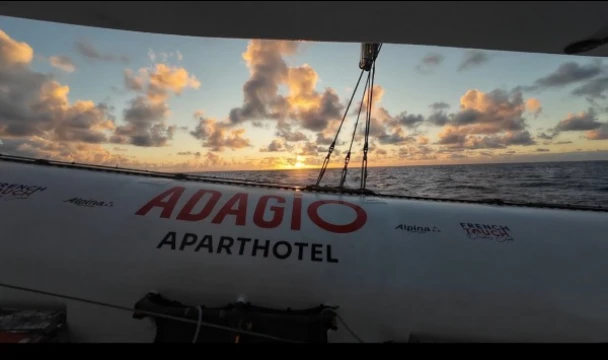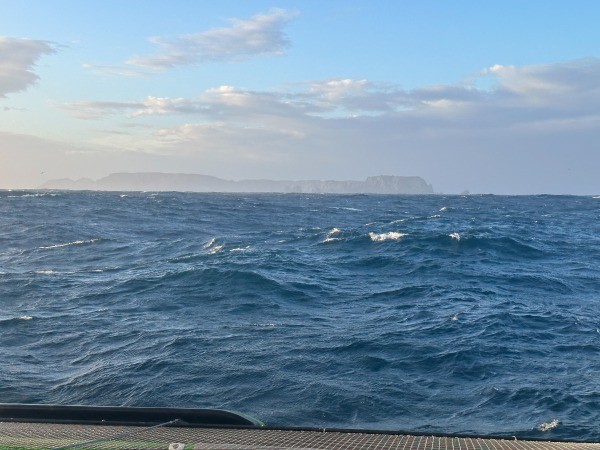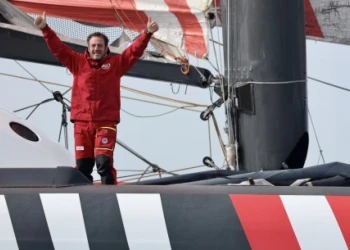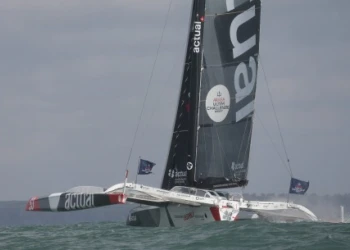
Arkéa Ultim Challenge-Brest: Sunday Race Update
Arkéa Ultim Challenge-Brest: Sunday Race Update
Arkéa Ultim Challenge-Brest leader Charles Caudrelier is now less than 1000 miles from Cape Horn and this afternoon was making a steady 24 knots. He should round Tuesday. Some 2756 miles behind him Armel Le Cléac'h (Banque Populairs XI) is making less than 15kts as he emerges from an anticyclonic ridge. He has just under 300 miles of an advance on Thomas Coville (Sodebo Ultim 3) who is making more than 30kts of boat speed, for the moment catching Le Cléac'h who should pick up speed as he catches a new low tonight or early tomorrow. Fourth placed Anthony Marchand (Actual Ultim) is less than 400 miles from Cape Leeuwin and Éric Péron (Adagio) is passing the longitude of the Kerguelens albeit nearly 900 miles to their north.

Why is Cape Horn a myth ?
Arkéa Ultim Challenge-Brest, THE SUNDAY QUESTION. Every Sunday we take a subject and drill down a little to explore it further. Today our French writers look at the intriguing history of Cape Horn. Race leader Charles Caudrelier (Maxi Edmond de Rothschild) should finally pass this third Great Cape of the course on Tuesday with Armel Le Cléac'h (Maxi Banque Populaire XI) and Thomas Coville (Sodebo Ultim 3) between four and five days behind now.
Since sailors started racing past it, and indeed for years before that, Cape Horm has represented the ultimate deliverance. It marks the end of the Pacific Ocean and the point at which the sailor turns 'left' for home. And it is an historic and emblematic route for marine transport in spite of how difficult it is to pass it.
The 425 meter cliff is often almost invisible, hidden behind the drizzle, miserable weather and heinous sea conditions. Cape Horn is a rock which stands out, blackish, gloomy, sinister, raw and inhospitable.
It lies at 55°58' South 67°17' West. Geographically it is where a continental shelf rises up and the swell meets in a wedge shaped funnel, the confluence between the cold waters of the Antarctic and the more temperate waters of the Pacific. And typically, this weekend when Caudrelier would have been rounding were it not for his decision to pause for more than two days, the winds have been between 70 and 80 knots in the worst gusts.
Its discovery was a boon which actually opened a new era for world trade. Although some may have crossed it before unreported, by accident, the first recorded crossing dates back to January 1616. A Dutch ship, led by Willem Schouten, financed by Isaac Lemaire, was seeking a new commercial passage. And they found this route in round the cliff. Both Schouten and Lemaire came from the same town, Hoorn, hence the name became Cape Horn.
Their discovery was a revolution. Here was a route which connected Europe and the Far East and both American coasts. In the 19th century, the gold rush contributed to a big spike in traffic in the tall shipping areas zone. And in the days of what are now considered primitive square riggers, passing to windward often took days and days of hard fighting. In the spring of 1788 in particular, the crew of the Bounty spent a month trying to round before Captain Bligh ordered the crew to turn and go the long way round, eastwards past Cape of Good Hope towards Tahiti their original destination.
The dangers at the Cape Horn have seen hundreds of tragedies. Between its discovery and the 20th century many estimates indicate that more than 10,000 sailors have died there.





